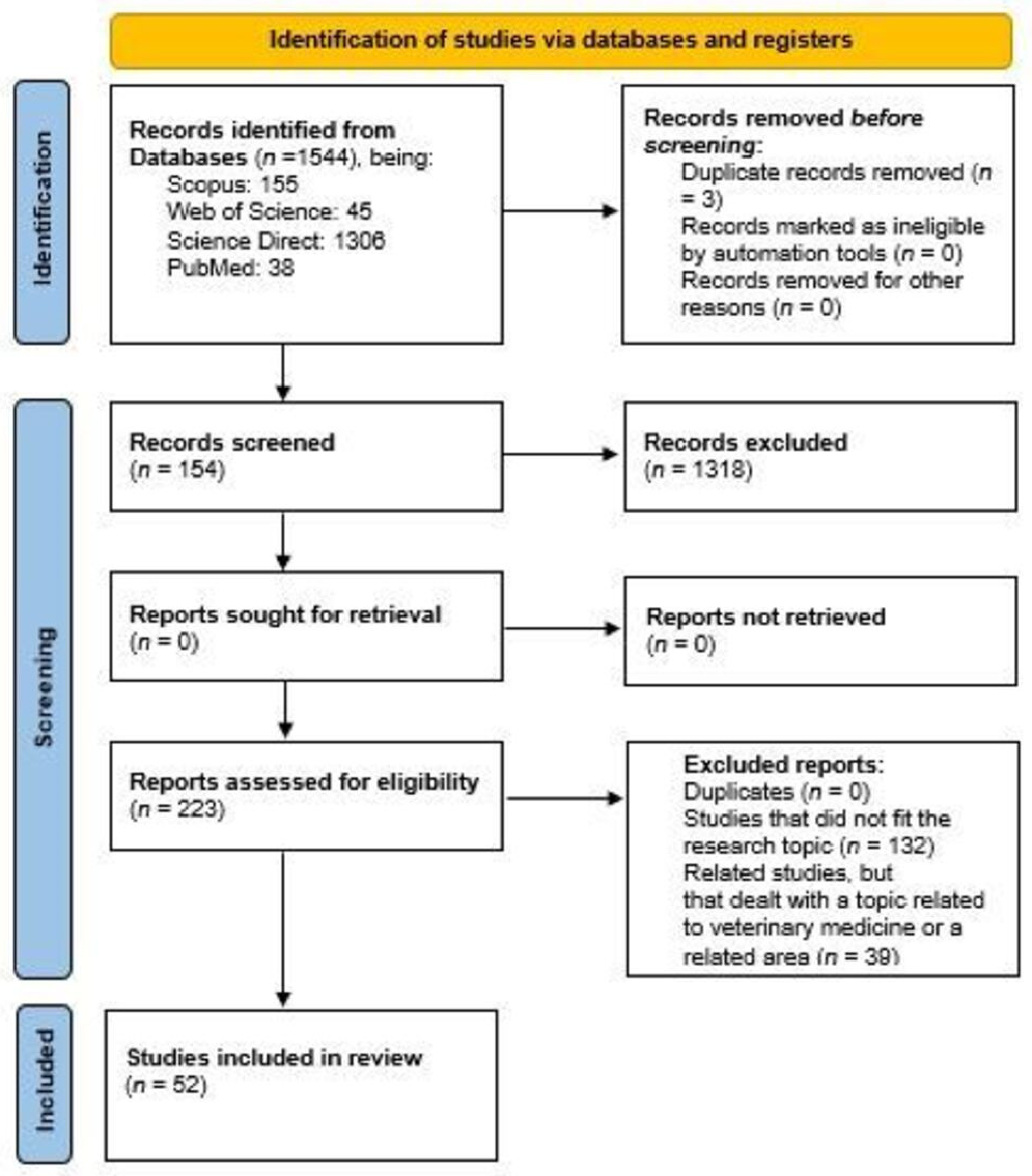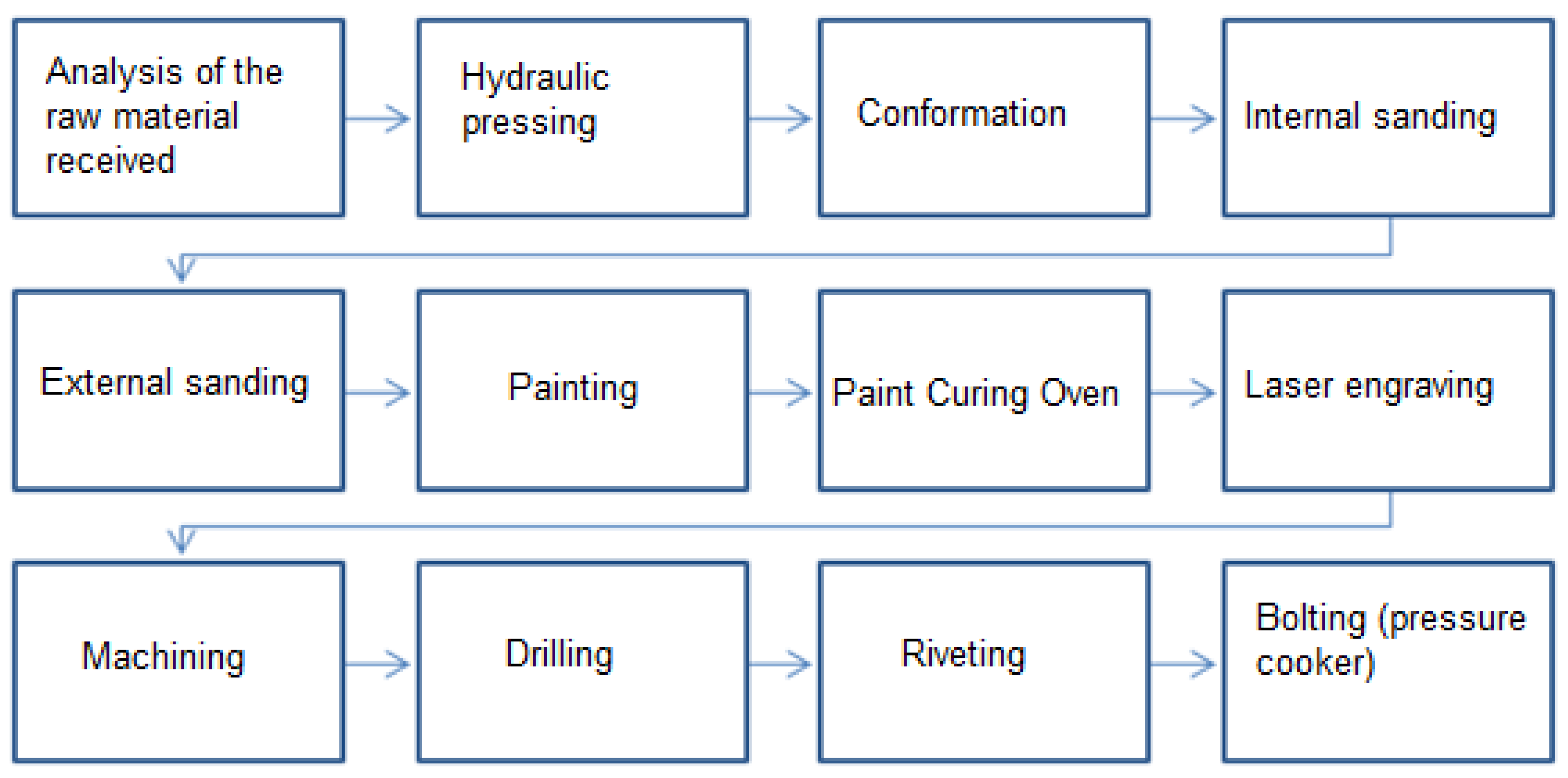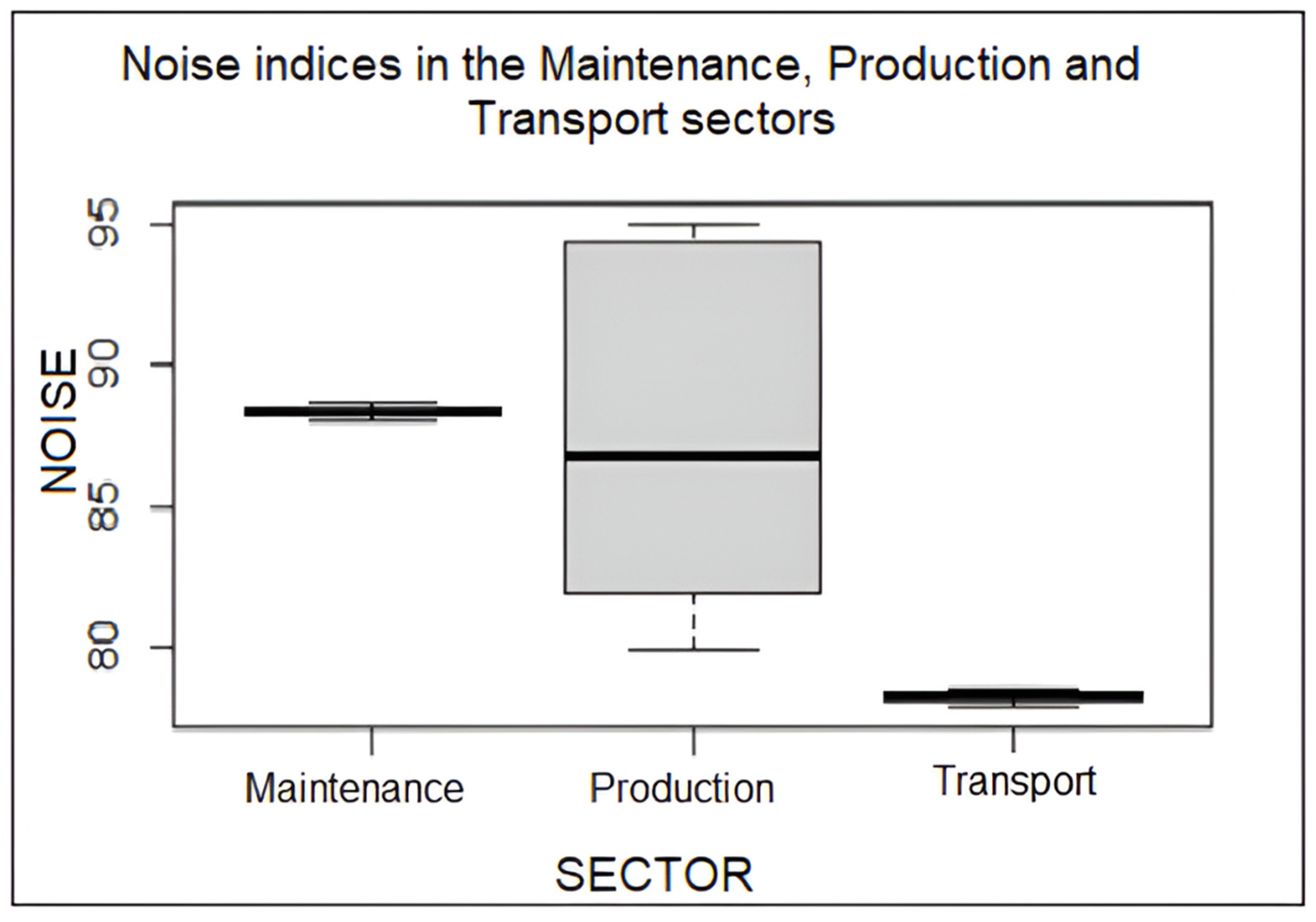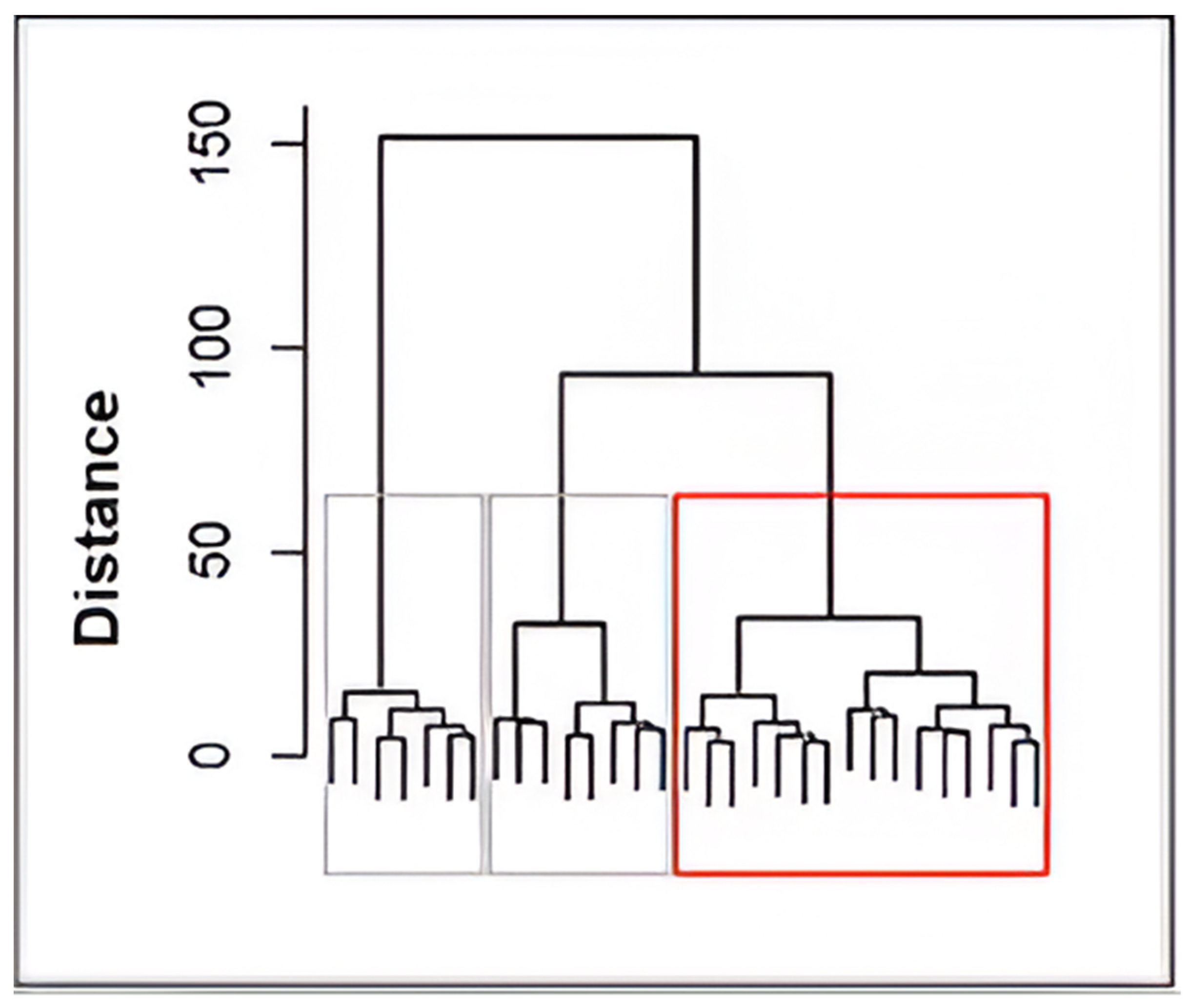Occupational Risks in a Brazilian Aluminum Forming Industry: Risk Analysis and Work Environment
Abstract
1. Introduction
2. Materials and Methods
2.1. Ethical Procedures
2.2. Theoretical Basis of the Research
2.3. Structured Sociodemographic Questionnaire
Identification of Pain
2.4. Measurements of Noise, Temperature, and Illuminance Indices in the Work Environment
2.5. Statistical Analysis
3. Results
3.1. Characterization of the Company
Characterization of Functions and Processes
3.2. Analysis of Work Demands and Postures
3.3. Work Environment
3.3.1. Noise
3.3.2. Temperature
3.3.3. Illuminance
3.4. Result of Statistical Analyzes
3.4.1. Pearson Correlation and Tetrachoric Correlation
3.4.2. Cluster Analysis
4. Final Considerations
Author Contributions
Funding
Institutional Review Board Statement
Informed Consent Statement
Data Availability Statement
Acknowledgments
Conflicts of Interest
References
- Bauerle, T.J.; McGonagle, A.K.; Magley, V.J. Mere overrepresentation? Using cross-occupational injury and job analysis data to explain men’s risk for workplace fatalities. Saf. Sci. 2016, 83, 102–113. [Google Scholar]
- Åkerstedt, T.; Wright, K.P. Sleep loss and fatigue in shift work and shift work disorder. Sleep Med. Clin. 2009, 4, 257–271. [Google Scholar]
- Ince, H.; İnce, N.; Ozyildirim, B.A. Occupational accidents and forensic medicine in Turkey. J. Clin. Forensic Med. 2006, 13, 326–330. [Google Scholar] [CrossRef] [PubMed]
- Ribeiro, F.H.; Hermosilla, J.L.G.; Achcar, J.A.; da Silva, E.C.C. Work accidents and their association with the factors of age and length of experience of the worker: A documentary research based on the SINAN system registry. In Proceedings of the XXXV National Meeting on Production Engineering: Global Perspectives for Production Engineering, Odessa, Ukraine, 10–12 August 2018. [Google Scholar]
- Fischer, F.M.; Borges, F.N.d.S.; Rotenberg, L.; Latorre, M.d.R.D.d.O.; Soares, N.S.; Rosa, P.L.F.S.; Nagai, R.; Landsbergis, P. Work (in)ability in nursing workers. Braz. J. Occup. Med. 2005, 3, 97–103. [Google Scholar]
- El Fassi, M.; Bocquet, V.; Majery, N.; Lair, M.L.; Couffignal, S.; Mairiaux, P. Work ability assessment in a worker population: Comparison and determinants of Work Ability Index and Work Ability score. BMC Public Health 2013, 13, 305. [Google Scholar] [CrossRef]
- Klasan, A.; Madzarac, G.; Milosevic, M.; Mustajbegovic, J.; Keleuva, S. Predictors of lower work ability among emergency medicine employees: The Croatian experience. Emerg. Med. J. 2013, 30, 275–279. [Google Scholar] [CrossRef] [PubMed]
- Cagno, E.; Micheli, G.J.L.; Perotti, S. Identification of OHS-related factors and interactions among those and OHS performances in SMEs. Saf. Sci. 2011, 49, 216–225. [Google Scholar] [CrossRef]
- International Labour Organization (ILO). 112th International Labour Conference. Geneva, Switzerland, 3–14 June 2024. Available online: https://www.ilo.org/resource/news/ilc/112/ilo-hold-its-112th-annual-international-labour-conference (accessed on 5 November 2024).
- Wang, B.; Wu, C.; Huang, L.; Zhang, L.; Kang, L.; Gao, K. Prevention and control of major accidents (MAs) and particularly serious accidents (PSAs) in the industrial domain in China: Current status, recent efforts, and future prospects. Process Saf. Environ. Prot. 2018, 117, 254–266. [Google Scholar] [CrossRef]
- Chau, N.; Predine, R.; Benamghar, L.; Michaely, J.P.; Choquet, M.; Predine, E. Determinants of school injury proneness in adolescents: A prospective study. Public Health 2008, 122, 801–808. [Google Scholar] [CrossRef]
- Salminen, S. Have young workers more injuries than older ones? An international literature review. J. Saf. Res. 2004, 35, 513–521. [Google Scholar] [CrossRef]
- Reniers, G.; Gidron, Y. Do cultural dimensions predict prevalence of fatal work injuries in Europe? Saf. Sci. 2013, 58, 76–80. [Google Scholar] [CrossRef]
- Carrillo-Castrillo, J.A.; Rubio-Romero, J.C.; Onieva, L.; López-Arquillos, A. The causes of severe accidents in the Andalusian manufacturing sector: The role of human factors in official accident investigations. Hum. Factors Ergon. Manuf. Serv. Ind. 2016, 26, 68–83. [Google Scholar] [CrossRef]
- Cheng, C.-W.; Leu, S.-S.; Lin, C.-C.; Fan, C. Characteristic analysis of occupational accidents at small construction enterprises. Saf. Sci. 2010, 48, 698–707. [Google Scholar]
- Chang, D.-S.; Tsai, Y.-C. Investigating the long-term change of injury pattern on severity, accident types, and sources of injury in Taiwan’s manufacturing sector between 1996 and 2012. Saf. Sci. 2014, 68, 231–242. [Google Scholar]
- Camino López, M.A.; Ritzel, D.O.; Fontaneda, I.; González Alcantara, O.J. Construction industry accidents in Spain. J. Saf. Res. 2008, 39, 497–507. [Google Scholar] [CrossRef]
- López Arquillos, A.; Rubio Romero, J.C.; Gibb, A. Analysis of construction accidents in Spain, 2003–2008. J. Saf. Res. 2012, 43, 381–388. [Google Scholar]
- Zhang, J.J.; Xu, K.L.; Reniers, G.; You, G. Statistical analysis of the characteristics of extraordinarily severe coal mine accidents (ESCMAs) in China from 1950 to 2018. Process Saf. Environ. Prot. 2020, 133, 332–340. [Google Scholar]
- Iida, I.; Guimarães, L.B.M. Ergonomics: Design and Production, 3rd ed.; Blucher: São Paulo, Brazil, 2016. [Google Scholar]
- International Labour Organization (ILO). ILO Centenary Declaration for the Future of Work. 2019. Available online: https://www.ilo.org/about-ilo/mission-and-impact-ilo/ilo-centenary-declaration-future-work-2019 (accessed on 5 November 2024).
- Santana, V.; Nobre, L.; Waldvogel, B.C. Occupational accidents in Brazil between 1994 and 2004: A review. Sci. Public Health 2005, 10, 841–855. [Google Scholar]
- Altunkaynak, B. A statistical study of occupational accidents in the manufacturing industry in Turkey. Int. J. Ind. Ergon. 2018, 66, 101–109. [Google Scholar] [CrossRef]
- Nenonen, S. Fatal workplace accidents in outsourced operations in the manufacturing industry. Saf. Sci. 2011, 49, 1394–1403. [Google Scholar]
- Hedlund, F.H. Recorded fatal and permanently disabling injuries in South African manufacturing industry—Overview, analysis and reflection. Saf. Sci. 2013, 55, 149–159. [Google Scholar]
- Díaz Aramburu, C.; de la Orden Rivera, M.V.; Zimmermann Verdejo, M. Actividades Económicas Con Mayor Siniestralidad, Penosidad y Peligrosidad: Sector de la Construcción; Departamento de Investigación e Información: Madrid, Spain, 2010. [Google Scholar]
- Adão, N.M.L.; Dias, K.P. Green economy and the challenges of the metalworking sector. E-TECHJ. Technol. Ind. Compet. 2012, 1–13. [Google Scholar] [CrossRef]
- Veiga, R.A.R.; Xavier, E.A.; Lenzi, F.C. Uma análise do processo produtivo e das condições ergonômicas do trabalho na Mefaro Indústria Metalmecânica. Rev. Ciênc. Exatas Tecnol. 2012, 7, 97–106. [Google Scholar]
- Fernandes, R.C.P.; Assunção, A.A.; Carvalho, F.M. Changes in industrial production methods and workers’ health. Sci. Public Health 2010, 15, 2143–2151. [Google Scholar]
- Liberati, A.; Altman, D.G.; Tetzlaff, J.; Mulrow, C.; Gotzsche, P.C.; Ioannidis, J.P.A.; Clarke, M.; Devereaux, P.J.; Kleijnen, J.; Moher, D. The PRISMA statement for reporting systematic reviews and meta-analyses of studies that evaluate healthcare interventions: Explanation and elaboration. BMJ 2009, 339, b2700. [Google Scholar] [CrossRef]
- Corlett, E.N.; Manenica, I. The evaluation of posture and its effects. In Evaluation of Human Work: A Practical Ergonomics Methodology; Wilson, J.R., Corlett, E.N., Eds.; Taylor & Francis: Abingdon, UK, 1995; pp. 1–10. [Google Scholar]
- Ministry of Labor. Regulatory Standard 17—Ergonomics. 2022. Available online: https://www.gov.br/trabalho-e-emprego/pt-br/acesso-a-informacao/participacao-social/conselhos-e-orgaos-colegiados/comissao-tripartite-partitaria-permanente/normas-regulamentadora/normas-regulamentadoras-vigentes/norma-regulamentadora-no-17-nr-17 (accessed on 20 July 2024).
- Ministry of Labor. Regulatory Standard 15—Unhealthy Activities. 2021. Available online: https://www.gov.br/trabalho-e-emprego/pt-br/acesso-a-informacao/participacao-social/conselhos-e-orgaos-colegiados/comissao-tripartite-partitaria-permanente/normas-regulamentadora/normas-regulamentadoras-vigentes/norma-regulamentadora-no-15-nr-15 (accessed on 20 July 2024).
- Fundacentro. NHO 06—Assessment of Occupational Exposure to Heat. 2017. Available online: https://apisobrecarga.fundacentro.gov.br/doc/NHO06.pdf (accessed on 2 August 2024).
- Fundacentro. NHO 11—Assessment of Lighting Levels in Indoor Work Environments. 2024. Available online: https://www.gov.br/fundacentro/pt-br/centrais-de-conteudo/biblioteca/nhos (accessed on 2 August 2024).




| Number of Publications | ||||
|---|---|---|---|---|
| Keywords | Scopus | Web of Science | Science Direct | PubMed |
| “metal industry” AND “work accidents” | 7 | 0 | 29 | 5 |
| self-perception at work AND “work accidents” | 7 | 6 | 480 | 5 |
| physical pain and “accidents at work” AND “industry” | 0 | 0 | 4 | 0 |
| “work environment” AND “work accidents” | 137 | 39 | 489 | 21 |
| accident statistics AND metal sector AND “occupational diseases” | 4 | 0 | 304 | 7 |
| Total | 155 | 45 | 1306 | 38 |
| Sex | Age (Years) | Company Times (Years) | Function | Number of Accidents in the Company |
|---|---|---|---|---|
| Female | 34 | 5 | Production assistant | 0 |
| Female | 35 | 0.6 | Production assistant | 0 |
| Female | 35 | 0.6 | Production assistant | 0 |
| Female | 21 | 3 | Production assistant | 0 |
| Female | 43 | 2 | Production assistant | 0 |
| Female | 18 | 0.6 | Production assistant | 0 |
| Female | 40 | 8 | Production assistant | 0 |
| Female | 26 | 4 | Production assistant | 0 |
| Female | 46 | 9 | Production assistant | 0 |
| Male | 54 | 4 | Machine operater | 1 |
| Male | 23 | 0.8 | Machine operater | 0 |
| Male | 25 | 0.5 | Machine operater | 0 |
| Female | 41 | 5 | Machine operater | 0 |
| Male | 27 | 5 | Machine operater | 0 |
| Male | 28 | 3 | Machine operater | 1 |
| Male | 25 | 6 | Machine operater | 2 |
| Male | 24 | 0.2 | Machine operater | 0 |
| Female | 29 | 3 | Machine operater | 0 |
| Male | 23 | 0.3 | Machine operater | 1 |
| Male | 18 | 0.6 | Machine operater | 2 |
| Male | 19 | 0.1 | Machine operater | 0 |
| Male | 19 | 0.7 | Machine operater | 1 |
| Male | 21 | 6 | Machine operater | 0 |
| Male | 33 | 7 | Machine operater | 2 |
| Male | 22 | 3 | Machine operater | 0 |
| Male | 23 | 3 | Maintenance supervisor | 0 |
| Female | 46 | 9 | Production assistant | 0 |
| Female | 24 | 3 | Production assistant | 0 |
| Female | 18 | 0.6 | Production assistant | 0 |
| Male | 33 | 6 | Electrical technician | 1 |
| Male | 28 | 5 | Mechanic | 1 |
| Male | 28 | 5 | CNC lathe mechanic/operator | 0 |
| Function | Noise (dB) | Recommended Maximum dB | Temperature (°C) | Recommended Maximum (°C) | Illuminance (lux) | Recommend-ed Maximum (lux) |
|---|---|---|---|---|---|---|
| CNC machining machine operator | 88.3 | 85 | 26.2 | 20–23 | 700 | 500 |
| Maintenance Assistant | 88.3 | 85 | 25.7 | 20–23 | 430 | 300 |
| Electromechanics | 88.3 | 85 | 24 | 20–23 | 430 | 300 |
| Industrial mechanic | 88.3 | 85 | 24 | 20–23 | 430 | 300 |
| Painting helper | 94.7 | 85 | 27 | 20–23 | 800 | 750 |
| Organizer | 89.4 | 85 | 24.5 | 20–23 | 350 | 200 |
| Production pointer | 81.1 | 85 | 24.5 | 20–23 | 350 | 300 |
| Production assistant | 94.7 | 85 | 24.1 | 20–23 | 400 | 300 |
| Responsible for the production line | 86.1 | 85 | 24 | 20–23 | 350 | 300 |
| Expedition | 87.9 | 85 | 24 | 20–23 | 458 | 300 |
| Production manager | 81.2 | 85 | 24.2 | 20–23 | 350 | 300 |
| Production operator | 94.7 | 85 | 24.8 | 20–23 | 400 | 300 |
| Production supervisor | 81.2 | 85 | 24.5 | 20–23 | 350 | 300 |
| Security technician | 86.7 | 85 | 24.3 | 20–23 | 473 | 500 |
| Driver | 78.2 | 85 | 25 | 20–23 | 458 | 300 |
| Truck driver | 78.2 | 85 | 25 | 20–23 | 458 | 300 |
| Warehouse assistant | 84.9 | 85 | 24.5 | 20–23 | 350 | 200 |
| Function | Average (dB) | Standard Deviation (dB) | Function | Average (dB) | Standard Deviation (dB) |
|---|---|---|---|---|---|
| CNC machining machine operator | 8.8 | 0.1 | In charge of the production line | 86.1 | 0.2 |
| Maintenance assistant | 8.8 | 0.3 | Expedition | 8.7 | 0.1 |
| Electromechanics | 8.8 | 0.0 | Production manager | 8.1 | 0.2 |
| Industrial mechanic | 88.3 | 0.1 | Production operator | 94.7 | 0.3 |
| Painting helper | 94.7 | 0.1 | Production supervisor | 81.2 | 1.1 |
| Warehouse | 8.9 | 0.2 | Security technician | 86.7 | 0.1 |
| Production pointer | 8.1 | 0.2 | Driver | 7.8 | 0.3 |
| Warehouse assistant | 8.4 | 0.3 | Truck driver | 7.8 | 0.3 |
| Production assistant | 94.7 | 0.07 | - | - | - |
| Source of Variation | Degrees of Freedom | Sum of Squares | Mean Square | F | p-Value |
|---|---|---|---|---|---|
| Sector | 2 | 259.9 | 129.9 | 6.7 | 0.0 |
| Residual | 45 | 869.1 | 19.3 | - | - |
| Sectors | Difference Between Means | Lower Limit | Upper Limit | p-Value |
|---|---|---|---|---|
| Production— Maintenance | −0.7 | −4.3 | 2.8 | 0.8 |
| Transport— Maintenance | −10.0 | −16 | −3.2 | 0.0 |
| Transport— Production | −9.3 | −15.7 | −2.8 | 0.0 |
| Function | Confidence Interval for Temperature (°C) |
|---|---|
| CNC machining machine operator | 25.7–26.6 |
| Maintenance Assistant | 25.6–25.9 |
| Electromechanical | 23.7–24.3 |
| Industrial mechanic | 23.6–24.4 |
| Painting helper | 26.4–27.7 |
| Warehouse | 23.2–25.8 |
| Production pointer | 23.2–25.8 |
| Warehouse assistant | 23.2–25.8 |
| Production assistant | 23.7–24.5 |
| In charge of the production line | 23.6–24.4 |
| Expedition | 23.3–24.7 |
| Production manager | 23.5–24.8 |
| Production operator | 23.8–25.7 |
| Production supervisor | 24.4–24.7 |
| Security technician | 24.1–24.4 |
| Driver | 24.5–25.6 |
| Truck driver | 24.5–25.6 |
| Function | Confidence Interval for Illuminance (LUX) |
|---|---|
| CNC machining machine operator | 697.5–702.4 |
| Maintenance assistant | 426.6–434.5 |
| Electromechanical | 425.0–434.9 |
| Industrial mechanic | 425.0–434.9 |
| Painting helper | 799.1–801.7 |
| Warehouse | 350.0–350.0 |
| Production pointer | 350.0–350.0 |
| Warehouse assistant | 350.0–350.0 |
| Production assistant | 398.0–401.5 |
| In charge of the production line | 349.8–350.2 |
| Expedition | 454.7–463.1 |
| Production manager | 350.0–350.0 |
| Production operator | 399.3–401.1 |
| Production supervisor | 349.2–351.1 |
| Security technician | 466.7–479.2 |
| Driver | 457.5–458.4 |
| Truck driver | 457.5–458.4 |
| Individual | Sex | Age | Time in the Role (Years) | R | Individual | Sex | Age | Time in the Role (Years) | R |
|---|---|---|---|---|---|---|---|---|---|
| p1 | 0 | 48 | 9 | 0 | p17 | 0 | 24 | 0.16 | 0 |
| p2 | 1 | 34 | 15 | 0 | p18 | 1 | 21 | 3 | 0 |
| p3 | 0 | 54 | 11 | 0 | p19 | 1 | 43 | 2 | 0 |
| p4 | 0 | 23 | 0.6 | 0 | p20 | 1 | 29 | 3 | 0 |
| p5 | 1 | 25 | 0.4 | 0 | p21 | 1 | 18 | 6 | 0 |
| p6 | 1 | 35 | 0.5 | 0 | p22 | 0 | 23 | 0.25 | 1 |
| p7 | 1 | 35 | 0.5 | 0 | p23 | 0 | 18 | 0.5 | 2 |
| p8 | 1 | 41 | 0.41 | 0 | p24 | 0 | 19 | 0.83 | 0 |
| p9 | 0 | 27 | 5 | 1 | p25 | 0 | 19 | 0.58 | 1 |
| p10 | 0 | 28 | 2 | 1 | p26 | 1 | 40 | 5 | 0 |
| p11 | 0 | 23 | 1 | 0 | p27 | 0 | 32 | 6 | 0 |
| p12 | 0 | 28 | 3 | 1 | p28 | 1 | 26 | 4 | 0 |
| p13 | 0 | 28 | 5 | 0 | p29 | 1 | 46 | 9 | 0 |
| p14 | 0 | 33 | 6 | 1 | p30 | 0 | 33 | 7 | 2 |
| p15 | 0 | 22 | 3 | 0 | p31 | 1 | 24 | 3 | 0 |
| p16 | 0 | 25 | 6 | 2 | - | - | - | - | - |
| Association | Student Test | Degrees of Freedom | p-Value | Confidence Intervals | Correlation |
|---|---|---|---|---|---|
| Answer—Factor 1 | −31.1 | 29 | 0.004 | −0.7–0.1 | −0.5 |
| Answer—Factor 2 | −1.4 | 29 | 0.166 | −0.5–0.1 | −0.2 |
| Answer—Factor 3 | −0.5 | 29 | 0.875 | −0.3–0.3 | −0.0 |
Disclaimer/Publisher’s Note: The statements, opinions and data contained in all publications are solely those of the individual author(s) and contributor(s) and not of MDPI and/or the editor(s). MDPI and/or the editor(s) disclaim responsibility for any injury to people or property resulting from any ideas, methods, instructions or products referred to in the content. |
© 2025 by the authors. Licensee MDPI, Basel, Switzerland. This article is an open access article distributed under the terms and conditions of the Creative Commons Attribution (CC BY) license (https://creativecommons.org/licenses/by/4.0/).
Share and Cite
Mezoni, M.F.; de Paula Xavier, A.A.; Oro, S.R.; Ribas Pessa, S.L.; Schmidt de Oliveira, M.; Steffen, V. Occupational Risks in a Brazilian Aluminum Forming Industry: Risk Analysis and Work Environment. Safety 2025, 11, 30. https://doi.org/10.3390/safety11020030
Mezoni MF, de Paula Xavier AA, Oro SR, Ribas Pessa SL, Schmidt de Oliveira M, Steffen V. Occupational Risks in a Brazilian Aluminum Forming Industry: Risk Analysis and Work Environment. Safety. 2025; 11(2):30. https://doi.org/10.3390/safety11020030
Chicago/Turabian StyleMezoni, Maressa Fontana, Antonio Augusto de Paula Xavier, Sheila Regina Oro, Sergio Luiz Ribas Pessa, Maiquiel Schmidt de Oliveira, and Vilmar Steffen. 2025. "Occupational Risks in a Brazilian Aluminum Forming Industry: Risk Analysis and Work Environment" Safety 11, no. 2: 30. https://doi.org/10.3390/safety11020030
APA StyleMezoni, M. F., de Paula Xavier, A. A., Oro, S. R., Ribas Pessa, S. L., Schmidt de Oliveira, M., & Steffen, V. (2025). Occupational Risks in a Brazilian Aluminum Forming Industry: Risk Analysis and Work Environment. Safety, 11(2), 30. https://doi.org/10.3390/safety11020030








